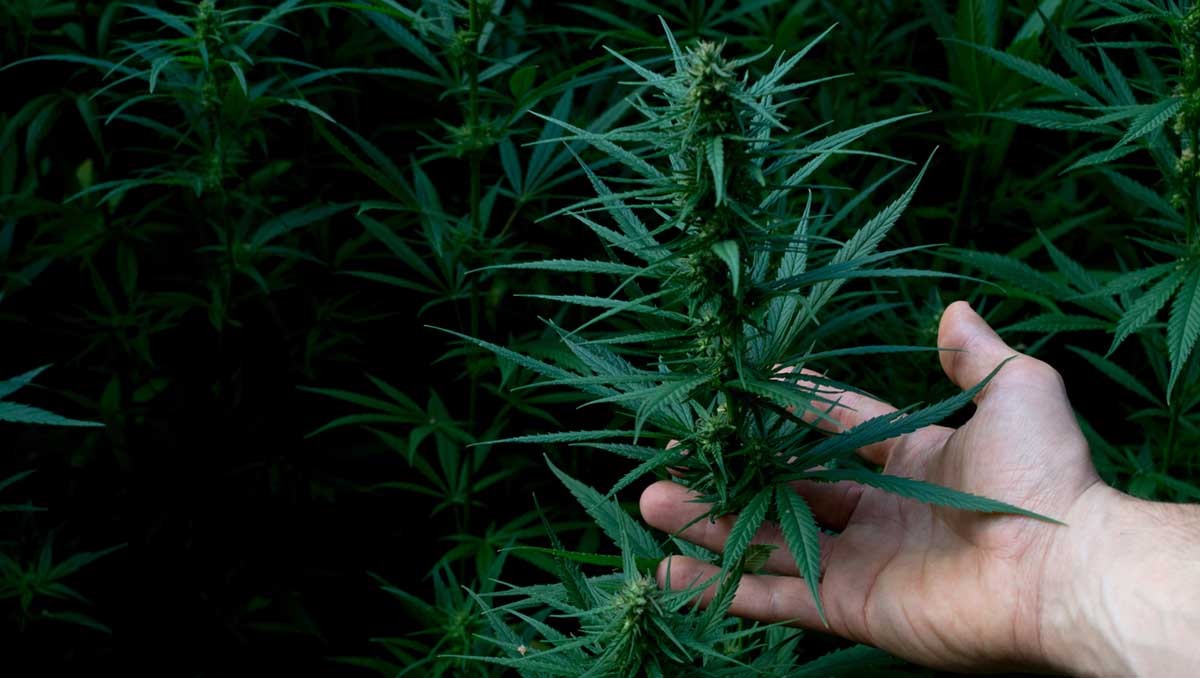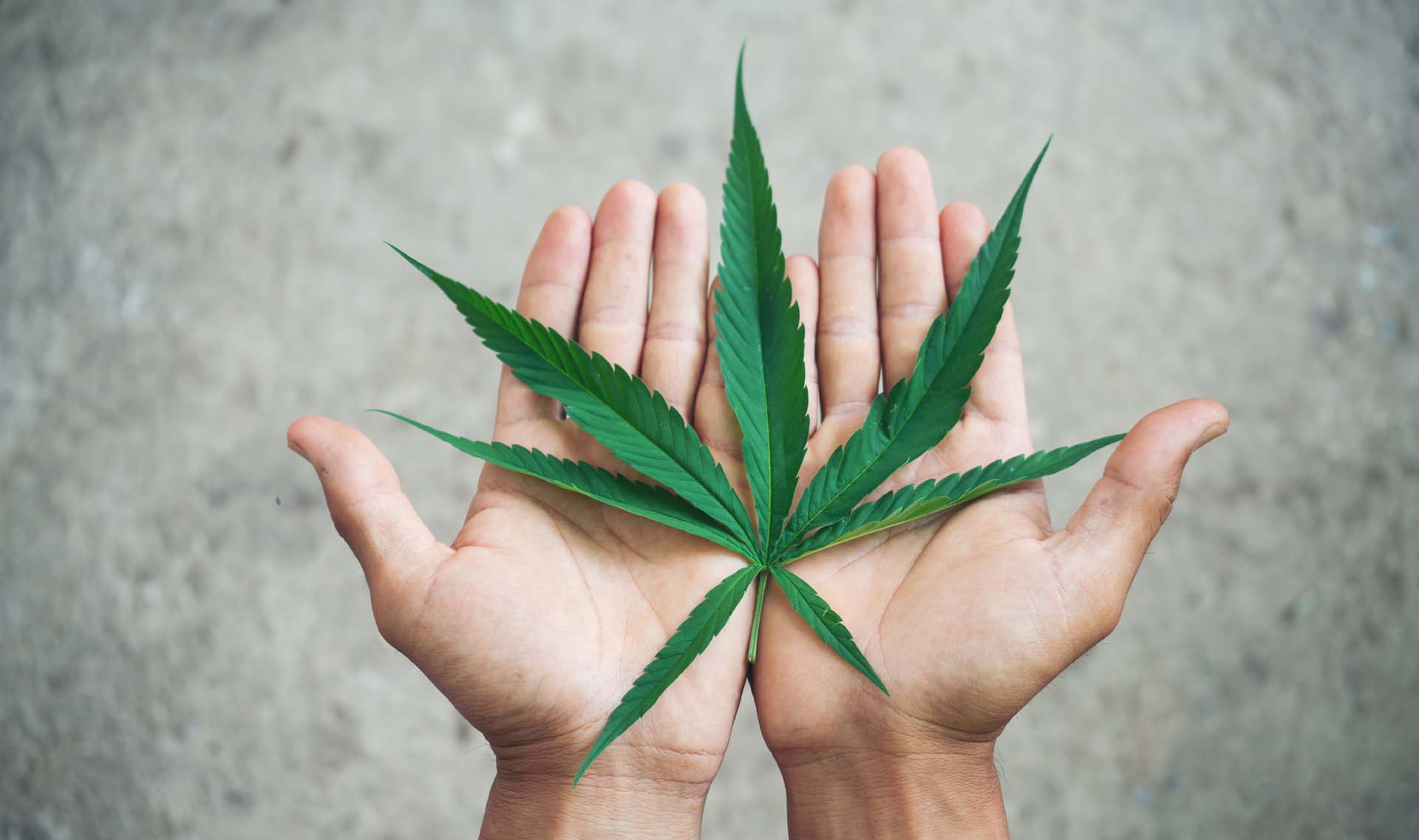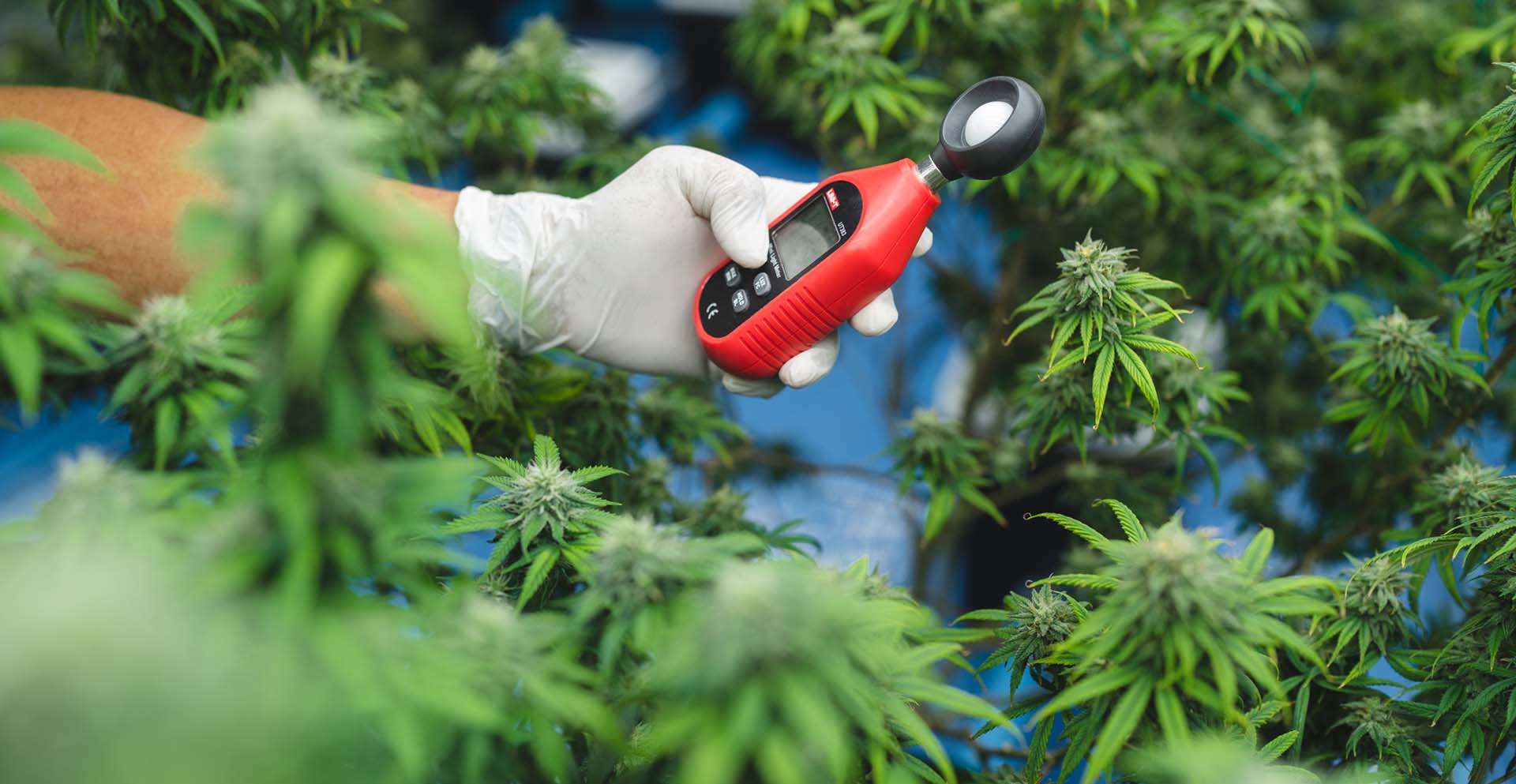Now accepting clients for New York, Maryland, Delaware, and Missouri! Please contact us if you have questions.
Cannabis Branding: Top Strategies, Tips & Examples
Table of Contents
Cannabis branding is no longer just about getting high—it’s a game-changer in an industry that’s blazing new trails. With cannabis brands popping up left and right, it’s crucial to understand the power they hold. From shaping consumer perceptions and preferences to standing out in a competitive market, effective cannabis branding goes beyond product recognition and traditional plant medicine branding. It taps into something deeper—the mind of the consumer.
In this fast-growing industry, building a strong brand identity can make all the difference. It’s not just about selling a product; it’s about creating an experience that resonates with consumers on a personal level. Cannabis branding has the potential to ignite a spark like no other.
So how can cannabis brands help consumers feel at ease? How do they navigate through risks while capturing hearts? Join us as we explore the benefits, strategies, and secrets behind successful cannabis branding—because in this green revolution, your brand matters more than ever before.
The Importance of an Effective Brand in the Cannabis Industry
Building trust and credibility is crucial for cannabis companies, and effective branding plays a significant role in achieving this. A strong brand can create a positive perception among consumers, leading to increased loyalty.
In the cannabis industry, where stigma still exists, branding has the power to overcome negative preconceptions associated with cannabis products. Through thoughtful branding strategies, companies can educate consumers about the benefits of their products and dispel misconceptions.
Moreover, effective branding is directly linked to increased market share in the cannabis industry. By differentiating themselves from competitors through unique brand identities, companies can attract more customers and gain a larger portion of the market.
To illustrate further:
Trust and Credibility: When a cannabis company establishes an authentic and trustworthy brand image, it instills confidence in consumers. This trust encourages repeat purchases and word-of-mouth recommendations.
Consumer Perception and Loyalty: Strong branding helps shape how consumers perceive a company’s products. By creating a consistent brand experience that resonates with target audiences, companies can foster customer loyalty.
Overcoming Stigma: The stigma surrounding cannabis remains an obstacle for many businesses. However, effective branding efforts can challenge these stereotypes by presenting cannabis as a legitimate industry offering safe and beneficial products.
Increased Market Share: Successful branding allows companies to stand out from competitors in a crowded market. By effectively communicating their unique value propositions through branding elements such as logos, packaging, and messaging, businesses can capture more market share.
Related: How to Develop a Cannabis Brand: A Step-by-Step Guide

Effective Cannabis Branding Strategies
Well-executed cannabis branding strategies can establish a strong brand identity. Consistent messaging and visual elements are essential for effective cannabis branding. Successful cannabis brands understand their target audience and tailor their strategies accordingly.
Brand Strategy Development: Defining Positioning and Values, Creating Unique Identity
Developing a strong brand strategy is essential for cannabis businesses to stand out in the competitive market. By defining a unique brand positioning, companies can differentiate themselves from their competitors and attract their target audience. This involves establishing core values that resonate with customers and aligning them with the overall business goals.
Creating a distinct brand identity is crucial in capturing the attention of potential consumers. Visual elements such as logos, color schemes, and packaging play a significant role in conveying the essence of the brand. Crafting compelling messaging that reflects the company’s values and resonates with the target audience further strengthens its identity.
A well-executed brand strategy not only helps establish a beautiful brand but also ensures long-term success. By aligning branding efforts with business objectives, companies can create a cohesive and consistent experience for their customers. This includes maintaining consistency across all touchpoints, from marketing materials to customer service interactions.
Keys to Branding Strategy Development:
Defining a unique brand positioning sets cannabis businesses apart.
Establishing core values that resonate with the target audience is crucial.
A distinct brand identity is created through visual elements and messaging.
Aligning brand strategy with business goals ensures long-term success.
By following these steps and investing time into developing an effective cannabis branding strategy, businesses can position themselves for success in this rapidly growing industry.
Summary – Brand Strategy:
A well-defined brand strategy helps differentiate cannabis businesses from competitors.
It sets the tone, personality, and values of the brand, creating a unique identity in the market.
Through strategic planning, businesses can align their branding efforts with their overall goals and objectives.
Messaging and Communication: Crafting Compelling Messaging, Developing Brand Voice
Crafting clear, concise messaging is crucial. It allows brands to effectively communicate their values and benefits to consumers. By distilling key messages that resonate with the target audience, brands can establish a strong connection.
Developing a consistent brand voice across all communication channels is equally important. Consistency helps build recognition and trust among consumers. Whether it’s through social media posts, website content, or packaging, maintaining a unified brand voice ensures a cohesive experience for customers.
Tailoring messaging to resonate with the needs and aspirations of the target audience is essential. Understanding the specific desires and pain points of consumers allows brands to create compelling messages that address their unique concerns. For instance, when targeting women in the cannabis market, emphasizing wellness benefits or highlighting stories of empowerment can be effective strategies.
Storytelling techniques play a significant role in creating emotional connections with consumers. By sharing authentic stories about how cannabis has positively impacted individuals’ lives, brands can foster empathy and understanding. These narratives help humanize the brand and make it relatable to its audience.
Summary – Consistent Messaging:
Consistency in messaging ensures that customers receive a clear and unified brand experience.
By consistently communicating key messages across various channels, businesses build trust and recognition among consumers.
This consistency helps to reinforce the brand’s core values and promises.
Design and Visual Identity: Creating Logo and Assets, Designing Packaging and Labels
Creating visually appealing logos that reflect the essence of the brand is crucial in cannabis branding. A well-designed logo can instantly communicate the personality and values of a cannabis company. It should capture the attention of potential customers and leave a lasting impression.
Determining appropriate color schemes, typography, imagery, etc., is essential for establishing a cohesive visual identity. The design elements used should align with the brand’s overall style and message. For example, vibrant colors may evoke energy and excitement, while earthy tones can convey a sense of nature and wellness.
Designing packaging and labels that comply with regulations while capturing the brand’s personality is another important aspect of cannabis branding. Packaging plays a vital role in attracting consumers to products on dispensary shelves. It should not only be visually appealing but also provide necessary information about the product.
Maintaining consistent visual elements across all touchpoints helps reinforce brand recognition. Whether it’s on packaging, websites, social media platforms, or advertising materials, using consistent colors, fonts, logos, and imagery creates a unified look that customers will associate with your brand.
Summary – Brand Identity & Visual Elements:
Visual elements such as logos, color schemes, typography, and imagery play a crucial role in cannabis branding.
These elements should be carefully designed to reflect the desired brand image and resonate with the target audience.
When used consistently across all marketing materials, they create visual recognition and enhance brand recall.

Research and Discovery: Understanding Target Audience and Market Trends, Competitor Analysis
Conducting thorough research is essential to identify the target audience’s demographics, preferences, and behaviors. By understanding who our consumers are, we can tailor our cannabis branding efforts to resonate with them effectively.
Staying updated on current market trends within the cannabis industry is crucial. This helps us stay ahead of the game and ensures that our brand remains relevant to trendsetters and innovators in the market. We want to be seen as a brand that understands what’s hot and exciting in the industry.
Competitor analysis plays a significant role in cannabis branding. By studying our competitors closely, we can identify gaps in the market that we can fill with unique offerings or approaches. It also allows us to spot opportunities for differentiation from other players in the industry.
Research and discovery serve as the foundation for developing an effective brand strategy. The insights gained from understanding our target audience, staying informed about market trends, and conducting competitor analysis inform every aspect of how we position ourselves in the cannabis industry.
Summary – Understanding your Target Audience:
Successful cannabis brands invest time in understanding their target audience demographics, preferences, behaviors, and motivations.
By knowing who their customers are, businesses can tailor their branding strategies to effectively reach and engage them.
This understanding allows brands to create relevant content that resonates with their audience’s interests and aspirations.
Other Key Considerations for Successful Cannabis Branding
Crafting a powerful brand identity in the rapidly evolving landscape of the cannabis industry requires a strategic approach that navigates legal complexities, stands out among competitors, and builds trust with consumers.
Legal Restrictions
Understanding legal restrictions is vital when developing cannabis branding strategies. With the evolving landscape of cannabis legalization, it is crucial to navigate the complex web of regulations to ensure compliance and avoid potential setbacks. By staying informed about local laws and regulations, cannabis brands can develop strategies that align with legal requirements while still effectively reaching their target audience.
Cannabis branding must adhere to both state and federal laws, which can vary significantly depending on the jurisdiction. Several key legal aspects to consider include:
1. Age Restrictions: Most jurisdictions have legal age restrictions for purchasing cannabis products. Brands need to ensure their marketing materials and branding do not appeal to underage individuals.
2. Labeling and Packaging Regulations: Cannabis products are subject to strict labeling and packaging requirements. Brands must include specific information, such as product potency, dosage, and health warnings, as mandated by local regulations.
3. Advertising Restrictions: Many regions place limitations on advertising cannabis products. Certain channels, such as billboards or online platforms, might have restrictions on the type of content that can be promoted.
4. Trademark and Intellectual Property: Trademark registration for cannabis-related products can be complex due to federal laws. Brands should consult with legal experts to navigate trademark registration and protection.
5. Health Claims: Making unsubstantiated health claims about cannabis products can lead to legal issues. Brands should ensure that any claims made about the health benefits of their products are supported by credible research.
6. Child-Resistant Packaging: Child-resistant packaging is often required for cannabis products to prevent accidental consumption by children. Brands need to comply with packaging safety standards to ensure product safety.
7. Local Regulations: Different states and countries have varying regulations for cannabis branding. Brands should be aware of the specific laws in their target markets to avoid legal complications.
8. CBD and Hemp Products: The legal status of CBD and hemp products can vary. Brands working with these products need to understand the legal nuances and ensure compliance with relevant laws.
9. Promotion of Responsible Use: Many jurisdictions require cannabis brands to promote responsible use and avoid encouraging excessive consumption.
10. Disclaimers: Brands may need to include specific disclaimers on their marketing materials to inform consumers about the potential risks and effects of cannabis products.
To navigate these legal considerations effectively, it’s advisable for cannabis brands to work closely with legal professionals who specialize in cannabis law and regulations. This ensures that their branding efforts align with the law and prevent any potential legal challenges.
Differentiation
All too often cannabis branding becomes a sea of mediocrity with its legions of green leafs and brand names beginning with “canna”.
Differentiation from competitors is key to successful cannabis branding efforts. The market for cannabis products continues to grow, making it essential for brands to stand out from the crowd. Creating a unique brand identity that resonates with consumers is crucial in capturing their attention and loyalty. This can be achieved through distinctive design elements, such as eye-catching logos, packaging, and visual aesthetics that set a brand apart from its competitors.
Building Trust
Building trust through transparent communication is crucial for long-term success in the cannabis industry. Given the historical stigma associated with cannabis, establishing credibility and trustworthiness is paramount. Openly communicating information about product quality, sourcing methods, and manufacturing processes can help build consumer trust. Brands should prioritize transparency in their messaging and engage with customers through educational content or community initiatives to foster a sense of authenticity.
By considering these key factors – understanding legal restrictions, differentiation from competitors, and building trust through transparent communication – cannabis brands can position themselves for success in an increasingly competitive market. Developing a strong brand identity with captivating design elements will not only attract consumers but also establish a foundation for long-term growth within the industry.

Best Practices for Optimizing Cannabis Branding
Creating a memorable brand story is crucial in establishing a strong emotional connection with consumers. By crafting a narrative that resonates with their values and aspirations, cannabis brands can leave a lasting impression. Whether it’s about inspiration, sharing the journey of the founders or highlighting the positive impact of cannabis on people’s lives, storytelling humanizes the brand and fosters trust.
Utilizing social media platforms effectively can significantly enhance the visibility of cannabis brands. With millions of active users, platforms like Instagram, Twitter, and Facebook offer an opportunity to engage directly with potential customers. By consistently posting engaging content, leveraging influencers, and encouraging user-generated content through contests or challenges, brands can increase their reach and build a loyal online community.
Incorporating sustainable practices into your cannabis brand not only helps protect the environment but also appeals to environmentally conscious consumers. From using eco-friendly packaging materials to implementing energy-efficient cultivation methods, adopting sustainable practices demonstrates a commitment to reducing the industry’s ecological footprint. This aligns with the values of consumers who prioritize sustainability and positions the brand as socially responsible.
By following these best practices for optimizing cannabis branding – creating a memorable brand story, utilizing social media effectively, and incorporating sustainable practices – businesses can establish themselves as reputable players in this competitive market. Building connections based on emotions, expanding online presence through social media engagement, and showcasing environmental consciousness will help attract and retain customers who resonate with these principles.
Remember that successful branding requires consistency across all touchpoints – from packaging to logo design to website aesthetics to customer interactions. By staying true to their core message while adapting to evolving consumer preferences, cannabis brands can carve out their unique space in this rapidly growing industry.
Marketing and Promotion: Developing a Comprehensive Marketing Plan, Utilizing Various Channels
Developing a comprehensive marketing plan is crucial for successful cannabis branding. By aligning the marketing strategy with the brand’s overall vision and goals, companies can effectively reach their target audience and create a lasting impact. Here are some key points to consider when developing a cannabis branding marketing plan:
Utilize various marketing channels to maximize reach and engagement. Social media platforms like Instagram, Facebook, and Twitter provide an excellent opportunity to connect with potential customers. Influencer partnerships can help amplify brand messaging and generate buzz within the cannabis community.
Content marketing plays a significant role in building brand awareness. Creating informative blog posts, videos, or podcasts that highlight the benefits of cannabis products can attract potential customers while establishing the brand as an industry expert.
Engaging campaigns are essential for increasing brand awareness and driving customer acquisition. Consider organizing contests or giveaways that encourage user-generated content related to your products. This not only creates excitement but also fosters a sense of community around your brand.
Measuring the effectiveness of marketing efforts is crucial for optimizing future strategies. Utilize analytics tools to track website traffic, social media engagement, and conversion rates. These insights will help identify which channels and campaigns are most successful in reaching your target audience.
Launch and Evaluation: Executing Brand Launch, Monitoring Performance
Launching a cannabis brand successfully is crucial to creating buzz and generating initial interest. A well-executed brand launch sets the stage for long-term success in the competitive cannabis market. Here are some strategies to effectively introduce your cannabis brand and monitor its performance:
Create a Buzz: Generate excitement around your brand by leveraging various marketing channels. Utilize social media platforms, influencers, and targeted advertising campaigns to reach your target audience. Engage with potential customers through captivating content that showcases your unique value proposition.
Build Brand Awareness: Develop a comprehensive marketing plan that includes both online and offline initiatives. Establish partnerships with dispensaries, host events, and participate in industry trade shows to increase visibility within the cannabis community. Leverage public relations efforts to secure media coverage and amplify your brand’s reach.
Track Key Performance Indicators (KPIs): Ongoing monitoring of KPIs is essential for evaluating branding success. Identify relevant metrics such as website traffic, social media engagement, sales conversions, customer feedback, and market share. Regularly analyze these indicators to gain insights into the effectiveness of your branding efforts.
Make Data-Driven Adjustments: Use the performance data collected to make informed decisions about necessary adjustments in your branding strategy. Identify areas where improvements can be made and implement changes accordingly. Whether it’s refining messaging, targeting specific demographics, or optimizing marketing campaigns, continuously adapt based on real-time data.

Showcasing Unique Approaches in Successful Cannabis Branding
Collaborating with influencers or celebrities can boost brand awareness within the industry. By partnering with cannabis culture trendsetters and innovators, your cannabis business can tap into their existing audience and gain exposure to a wider customer base. These collaborations not only help promote your products but also create a sense of credibility and trust among consumers.
Engaging in community initiatives and events helps create positive associations with the brand. By supporting local causes or organizing charity drives, your cannabis creative brand can demonstrate its commitment to social responsibility. This involvement fosters a strong connection between your brand and the community, positioning you as a company that genuinely cares about making a difference.
Leveraging innovative packaging designs sets your cannabis products apart from competitors. In an industry where aesthetics play a crucial role, eye-catching packaging can make all the difference.
Consider unique ideas such as light garden-themed packaging or sleek designs that exude luxury. By creating standout product packaging, you not only attract attention but also communicate the quality and sophistication of your offerings.
It’s essential to think beyond just marketing weed itself. Instead, focus on creating a beautiful brand that resonates with consumers on multiple levels – from design to positioning.
By incorporating these strategies into your branding efforts, you can establish yourself as a weed brand and a leader in the green market while appealing to customers who value both aesthetics and quality.
Cannabis Branding Examples
Illustrating the real-world impact of effective canna-branding, this section delves into compelling case studies that showcase distinct approaches to capturing consumer attention and loyalty.

Case Study: Wana Edibles and Om Edibles by Noise
Wana Edibles successfully positioned itself as a trusted provider of high-quality edibles. Their consistent branding messages emphasized reliability and consistency, resonating with consumers looking for a reliable source of cannabis-infused treats. By delivering on their promises, Wana Edibles built a strong reputation in the market.
On the other hand, Om Edibles took a different approach to cannabis branding. They focused on organic, small-batch production methods, catering to health-conscious individuals seeking natural alternatives. By highlighting their commitment to quality and using organic ingredients, Om Edibles appealed to a niche market segment.
Both Wana Edibles and Om Edibles utilized effective branding strategies to stand out in the competitive cannabis industry:
Wana Edibles
Emphasized reliability and consistency
Positioned themselves as a trusted provider of high-quality edibles
Created consistent branding messages
Om Edibles
Focused on organic production methods
Catered to health-conscious consumers
Highlighted their commitment to quality and natural ingredients
These distinct approaches allowed both companies to differentiate themselves from competitors and attract their target audience. Whether it was through consistent messaging or an emphasis on organic practices, Wana Edibles and Om Edibles successfully carved out their own unique brand identities.
By understanding the preferences of their target markets and tailoring their branding accordingly, both companies were able to establish themselves as reputable players in the cannabis industry. Through strategic positioning and effective messaging, they successfully connected with consumers who valued reliability or sought natural alternatives.
Case Study: Virtu CBD by Gitanos, Heavenly Berry CBD Tea by Black House Creative
Virtu CBD, a brand that focuses on athletes and fitness enthusiasts, has successfully established its unique positioning in the cannabis branding industry. By leveraging endorsements from professional athletes, Virtu CBD has built credibility among its target audience. This strategy has helped them create a strong connection with individuals who are looking for CBD products to enhance their athletic performance and overall fitness.
On the other hand, Black House Creative’s Heavenly Berry CBD Tea brand has taken a different approach to appeal to health-conscious consumers seeking relaxation. They have utilized vibrant packaging and developed a refreshing flavor profile for their CBD tea. This combination of aesthetics and taste has captured the attention of consumers looking for a calming and enjoyable beverage option.
Tools and Resources for Cannabis Branding: Agencies, Online Tools
Sourcing professional agencies specializing in cannabis branding can provide expert guidance to help your brand stand out in the competitive market. These agencies have extensive knowledge and experience in creating effective branding strategies that resonate with the target audience. They understand the unique challenges and regulations of the cannabis industry, ensuring compliance while crafting a compelling brand identity.
Leveraging online tools is another cost-effective way to enhance your cannabis branding efforts. Logo makers and design software enable you to create visually appealing logos and graphics that represent your brand’s personality. With these tools, you can customize colors, fonts, and imagery to align with your desired aesthetic.
To gain insights into consumer behavior and industry trends, utilize market research tools. These resources allow you to analyze data on customer preferences, purchasing habits, and market dynamics. By understanding your target audience better, you can tailor your branding strategy to effectively engage potential customers.
Exploring educational resources such as webinars or conferences focused on cannabis branding can also be beneficial. These platforms offer valuable information from industry experts who share their knowledge and best practices. Attending these events or accessing online resources allows you to stay updated on the latest trends, techniques, and strategies in cannabis branding.
Wrapping it Up – Key Takeaways on Cannabis Branding
Effective cannabis branding strategies play a vital role in the success of businesses operating in this industry. By creating a strong and unique brand, logo and identity, companies can differentiate themselves from competitors and establish trust with consumers.
To achieve successful cannabis branding, there are several key considerations to keep in mind. Understanding your target audience and their preferences is crucial for developing a brand that resonates with them. Staying compliant with regulations while maintaining creativity is essential in this highly regulated market.
Optimizing cannabis branding involves implementing best practices such as consistent messaging across all platforms, utilizing social media to engage with customers, and leveraging storytelling techniques to create an emotional connection.
Case studies like Wana Edibles and Om Edibles by Noise demonstrate how innovative packaging design and strategic partnerships can elevate brands to new heights. Similarly, Virtu CBD by Gitanos and Heavenly Berry CBD Tea by Black House Creative showcase the power of creative product development in capturing consumer interest.
To further enhance your own cannabis branding efforts, consider incorporating these takeaways into your strategy:
Understand your target audience’s preferences.
Stay compliant with regulations while being creative.
Implement consistent messaging across all platforms.
Engage with customers through social media.
Utilize storytelling techniques for emotional connection.
By following these guidelines and learning from successful case studies, you can develop a compelling cannabis brand that stands out in the market and drives customer loyalty.
Frequently Asked Questions
How does effective branding impact consumer purchasing decisions?
Effective branding helps create trust and recognition among consumers. It allows them to differentiate between different brands within the cannabis industry based on their values, positioning, and overall appeal.
How important is packaging design for cannabis brands?
Packaging design plays a crucial role in attracting consumers’ attention and conveying brand values. It should be both visually appealing and compliant in line with regulatory requirements.
Should I focus on local or national marketing efforts for my cannabis brand?
It depends on your business goals and target market. Local marketing can help establish a strong presence in a specific region, while national marketing can reach a broader audience and expand brand awareness.
How can I build trust with consumers in the cannabis industry?
Building trust requires transparency, consistent quality, and clear communication. Providing accurate product information, third-party lab testing results, and engaging with customers through educational content can help establish trust.
What role does social media play in cannabis branding?
Social media platforms provide an opportunity to connect directly with consumers, share brand stories, showcase products, and gather feedback. It is an effective tool for building a community around your cannabis brand.
How can I differentiate my cannabis brand from competitors?
Differentiation can be achieved through unique product offerings, innovative packaging design, exceptional customer service, and a serious vision and strong brand identity that resonates with your target audience.
Can I use slang or colloquial language in my cannabis branding?
While it may be tempting to use slang or colloquial language to connect with certain demographics, it’s important to consider your target audience’s preferences. Ensure that any language used aligns with your brand’s values and resonates positively with your intended customers.
What are some examples of successful cannabis branding campaigns?
One notable example is the brand “Dosist,” which focuses on providing precise cannabis dosages for health and wellness purposes. Their sleek and minimalist branding, along with their commitment to quality, has resonated well with consumers.
How can I maintain brand consistency across different marketing channels?
To maintain brand consistency, it’s crucial to establish clear guidelines for messaging, visual elements, and tone of voice. Regularly review and update these guidelines as needed, ensuring that all marketing materials align with your brand’s core values and identity.
Do Your Need Help Developing Your Cannabis Brand?
Develop an iconic, memorable brand that resonates with your target audience. Our cannabis branding agency handles every aspect of building and promoting your brand identity. Get started today with a FREE consultation on logo, packaging, web, and ad design that drives loyalty and revenue!
More To Explore






























